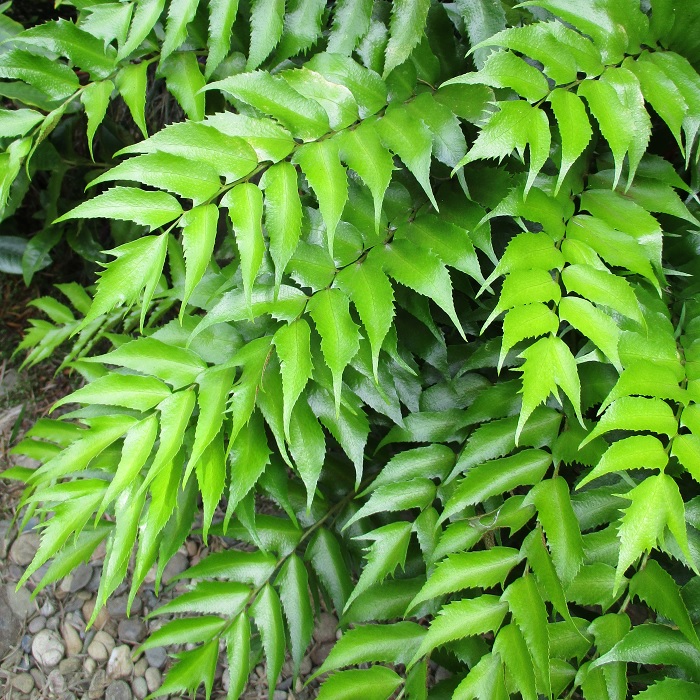UNITED STATES—It could be either an asset or a liability. With few exceptions, ferns do not want to be too exposed to direct sunlight or wind, especially during warm and dry weather. However, as long as they get just enough filtered light, they can be quite happy in sheltered spots that are a bit too shady for other plants. Most like to be watered regularly, and perhaps lightly fertilized in spring and summer.
They provide neither floral color nor fragrance. They lack interesting branch structure and bark. Since they reproduce by spores, they do not even produce any fruit, either edible or ornamental. For those who do not know them any better, they might seem to be rather boring. Yet, those of us who grow them know how handsome their lush, finely textured and uniquely patterned foliage is.
Of the popularly grown ferns, only two develop ‘trunks,’ (which are actually just clustered wiry roots growing downward through rotting stems). Two others are ‘epiphytes’ that naturally cling to trees or exposed stone, but in home gardens, are more popularly grown on wooden plaques. Most other ferns are terrestrial understory perennials that naturally live in the partial shade of larger plants.
Although mostly confined to the ground, some ferns can get quite large. Individual leaves, which are known as ‘fronds,’ can get several feet long. Even before it develops a trunk, Australian tree fern produces huge fronds that can shade an atrium. Other ferns with smaller leaves can spread very efficiently, and can even become invasive. Fortunately, most ferns are relatively complaisant.
The two popular epiphytic stag-horn ferns have weirdly lobed but otherwise undivided fronds. Leaves of the odd bird’s-nest fern is neither divided nor lobed. Otherwise, fern fronds are intricately divided into small leaflets known as ‘pinnae’. These pinnae are neatly arranged on opposite sides of leafstalks known as ‘rachi’. Some ferns have silvery variegation, but most are rich dark green.
Ferns innately do well in pots. Boston, maidenhair, rabbit’s foot, holly and bird’s-nest ferns are actually excellent houseplants. However, Australian tree fern and a few others shed irritating fuzz that would be a problem in the home. Most of the popular ferns are evergreen. Many consume their own deteriorating foliage by covering it with new foliage. Some ferns need occasional grooming.
Highlight: holly fern
This is one of those perennials that has mixed reviews. Although relatively tough once established, holly fern, Cyrtomium falcatum, is susceptible to rot and fungal leaf-spot. It likes to be watered somewhat regularly, but rots if the soil is constantly saturated. Leaf-spot is not as dangerous as it looks, but can be unsightly. Too much fertilizer (to correct the damage) can burn the foliage too.
Individual fronds might get as long as a foot and a half, with half a dozen to a dozen pairs of glossy and irregularly toothed pinnae. Foliar texture (remotely) resemble that of some types of holly. Because they disperse their roots so efficiently, mature specimens do not like to be transplanted. Small plants can grow as houseplants for years, but eventually want to get out into the garden. Holly fern likes a bit of shade, and will tolerate rather dark shade.






